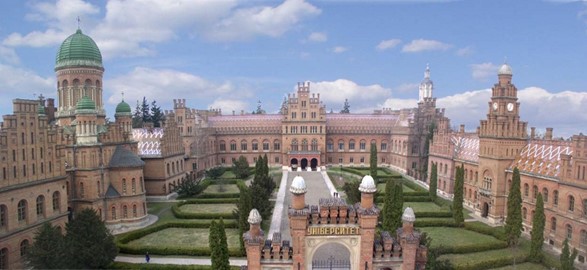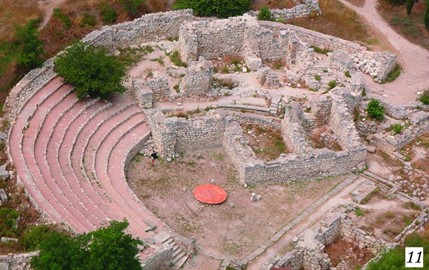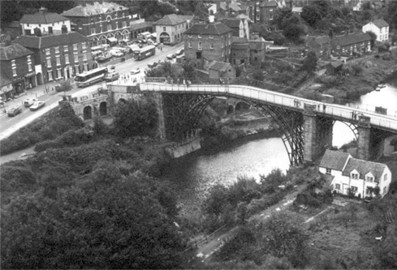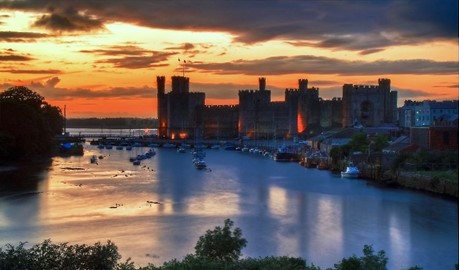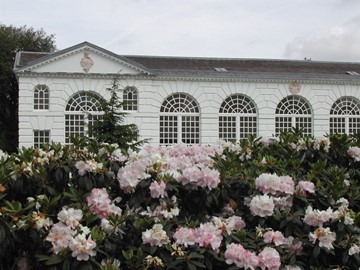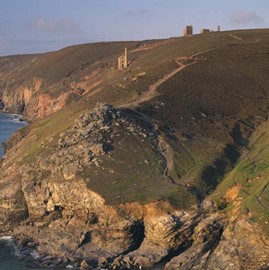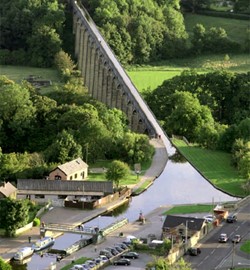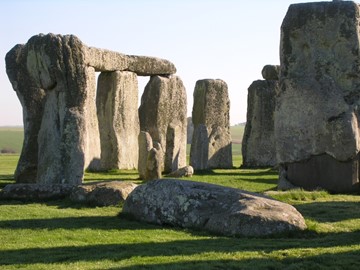region :: europe and north america
Istanbul
Istanbul, a UNESCO World Heritage site in Turkey, is a historic city famed for its rich cultural tapestry, blending Eastern and Western influences. Once known as Constantinople, it boasts iconic landmarks like the Hagia Sophia, a marvel of Byzantine architecture, and the Topkapi Palace, a testament to Ottoman grandeur. Its strategic location along the Bosphorus has shaped its legacy as a vibrant crossroads of civilizations, trade, and tradition. Today, it remains a captivating destination, preserving centur... Read More
Kyiv
Saint-Sophia Cathedral and Kyiv-Pechersk Lavra, a UNESCO World Heritage site in Ukraine, represent remarkable examples of Eastern Orthodox architecture and monastic life. The cathedral, dating back to the 11th century, features stunning mosaics and frescoes, reflecting its historical role as a spiritual and cultural center. Kyiv-Pechersk Lavra, a sprawling monastery complex, is renowned for its underground caves, golden-domed churches, and centuries-old relics, attracting pilgrims and visitors alike. Togeth... Read More
L'viv
L'viv Historic Centre, a UNESCO World Heritage site in Ukraine, is renowned for its well-preserved architectural ensemble spanning several centuries. The site showcases a blend of Eastern European, Italian, and German influences, evident in its churches, cathedrals, and public buildings. Founded in the medieval period, it thrived as a cultural and economic hub, reflected in its cobblestone streets and historic charm. Today, it stands as a testament to Ukraine's rich history and resilience.
Residence of Bukovinian and Dalmatian Metropolitans
The Residence of Bukovinian and Dalmatian Metropolitans, a UNESCO World Heritage site in Ukraine, is a striking example of 19th-century historicist architecture, designed by Czech architect Josef Hlavka between 1864 and 1882. This grand complex, originally built as a bishop’s residence, seminary, and monastery, blends Byzantine, Gothic, and Baroque styles, reflecting the Orthodox Church’s cultural identity under Austro-Hungarian rule. Today, it serves as part of a national university, showcasing its well-pr... Read More
Tauric Chersonese
Tauric Chersonese, a UNESCO World Heritage Site in Ukraine, is an ancient city founded by Dorian Greek colonists in the 5th century BC on the northern shores of the Black Sea. This archaeological treasure encompasses the remains of a thriving polis, including public buildings, residential areas, and early Christian monuments, alongside its chora—well-preserved agricultural plots that once supported vineyards vital to the city’s economy. Inscribed on the UNESCO list in 2013, it showcases a remarkable blend o... Read More
Ironbridge Gorge
Ironbridge Gorge, a UNESCO World Heritage Site in the UK, is renowned as the birthplace of the Industrial Revolution. This historic valley features the world’s first iron bridge, constructed in 1779, symbolizing a pivotal moment in engineering and industrial history. The site encompasses a well-preserved collection of 18th-century industrial landmarks, including furnaces, factories, and workers’ housing, set against a picturesque riverside landscape. It offers a unique glimpse into the technological advance... Read More
Gwynedd
The Castles and Town Walls of King Edward in Gwynedd, a UNESCO World Heritage Site in the UK, are renowned as premier examples of late 13th and early 14th-century military architecture in Europe. Built under King Edward I between 1283 and 1330, this collection includes four castles—Beaumaris, Harlech, Caernarfon, and Conwy—along with the fortified towns of Caernarfon and Conwy, designed by the masterful architect James of St. George. These well-preserved structures showcase innovative concentric designs and... Read More
Blenheim Palace
Blenheim Palace, a UNESCO World Heritage Site in the UK, is an impressive 18th-century Baroque residence built for John Churchill, the 1st Duke of Marlborough, following his victory at the Battle of Blenheim. Designed by Sir John Vanbrugh, it showcases grand architecture, ornate interiors, and extensive landscaped gardens crafted by Capability Brown. The palace also holds historical significance as the birthplace of Sir Winston Churchill. Today, it serves as a family home, tourist attraction, and venue for ... Read More
Bath
The City of Bath, a UNESCO World Heritage Site in the UK, is renowned for its well-preserved Roman baths, dating back to 43 AD, which showcase ancient engineering and architecture. Its elegant Georgian buildings, including the iconic Royal Crescent, reflect 18th-century urban design and attract visitors worldwide. The city’s natural hot springs, the only ones in Britain, have historically drawn people for their believed healing properties, blending cultural significance with historical charm.
New Lanark
New Lanark, a UNESCO World Heritage Site in the UK, is a remarkably preserved 18th-century cotton mill village founded by David Dale and later managed by Robert Owen, a social reformer. Established in 1786, it became a pioneering model for industrial communities, showcasing innovative worker welfare practices, including fair wages, education, and healthcare. The site features historic mills, worker housing, and a school, set against a picturesque riverside backdrop, reflecting its significance in industrial... Read More
Henderson Island
Henderson Island, a UNESCO World Heritage Site under UK jurisdiction, is a remote, uninhabited coral atoll in the eastern South Pacific, renowned for its pristine ecology largely untouched by humans. Its isolation has fostered unique biodiversity, including ten endemic plant species and four endemic land birds, making it an exceptional natural laboratory for studying island evolution and natural selection. Despite its ecological significance, the island faces challenges from plastic pollution washing ashore... Read More
Tower of London
The Tower of London, a UNESCO World Heritage site in the UK, is a historic fortress founded in 1066 by William the Conqueror. Renowned for its role as a royal palace, prison, and treasury, it has housed the Crown Jewels since the 14th century and remains a symbol of British monarchy and history. Its iconic White Tower and medieval architecture attract millions of visitors annually, offering insights into centuries of political intrigue and royal legacy.
Canterbury
Canterbury, a UNESCO World Heritage Site in the UK, is a historic city renowned for its well-preserved medieval architecture and cultural significance. At its heart lies Canterbury Cathedral, a masterpiece of Gothic design and the seat of the Archbishop of Canterbury, which has been a focal point of Christian pilgrimage since the martyrdom of Thomas Becket in 1170. The city’s ancient walls, charming cobbled streets, and the ruins of St. Augustine’s Abbey further highlight its rich history, making it a treas... Read More
Edinburgh
The Old and New Towns of Edinburgh, a UNESCO World Heritage site, showcase a remarkable blend of medieval and Georgian architecture. The Old Town features narrow, winding streets and historic landmarks, reflecting its medieval origins, while the New Town boasts elegant neoclassical buildings and planned urban design from the 18th century. Together, they represent centuries of cultural and historical development, offering a well-preserved glimpse into Scotland’s past.
Gough and Inaccessible Islands
Gough and Inaccessible Islands, a UNESCO World Heritage site, are remote volcanic islands in the South Atlantic, renowned for their pristine ecosystems and towering cliffs. They host one of the world’s largest seabird colonies, including the critically endangered Tristan albatross, alongside unique endemic species like the Gough moorhen and Inaccessible Island rail. These islands, part of the Tristan da Cunha archipelago, remain largely undisturbed, offering a vital haven for biodiversity in the cool temper... Read More
Maritime Greenwich
Maritime Greenwich, a UNESCO World Heritage site in the UK, is renowned for its rich naval history and architectural significance. It features the historic Royal Observatory, where the Prime Meridian defines Greenwich Mean Time, alongside elegant buildings like the Queen’s House and the Old Royal Naval College, designed by prominent architects such as Christopher Wren. This site exemplifies Britain’s maritime legacy, showcasing its contributions to navigation, science, and global exploration.
St. George
The Historic Town of St George, a UNESCO World Heritage Site of UK in Bermuda, is renowned as one of the earliest English colonial towns, established in 1612. It features a well-preserved historic townscape with charming vernacular architecture and a network of fortifications that showcase the evolution of British military engineering from the 17th to 20th centuries. Recognized in 2000, this site highlights a unique blend of cultural and maritime heritage, reflecting its significance as a continuously inhab... Read More
Blaenavon Industrial Landscape
The Blaenavon Industrial Landscape, a UNESCO World Heritage Site in the UK, showcases the pivotal role of South Wales in the Industrial Revolution through its well-preserved 18th and 19th-century ironworks, coal mines, quarries, and transportation systems. Recognized in 2000, it features key sites like the Blaenavon Ironworks and Big Pit National Coal Museum, alongside workers’ housing and social infrastructure, illustrating the technological and societal advancements of early industrialization. This cultur... Read More
Saltaire
Saltaire is a UNESCO World Heritage Site in the UK, recognized for its well-preserved Victorian industrial village. Built in the 19th century by philanthropist Titus Salt, it features a model community with workers’ housing, a mill, and public buildings designed to improve living conditions during the Industrial Revolution. The site showcases Italianate architecture and urban planning, reflecting a blend of functionality and aesthetic appeal. Today, it stands as a testament to social reform and industrial h... Read More
Dorset and East Devon Coast
This UNESCO World Heritage site, often called the Jurassic Coast, stretches along 95 miles of stunning coastline in southern England. It’s renowned for its geological significance, showcasing 185 million years of Earth’s history through dramatic cliffs, fossil-rich beaches, and unique rock formations. The area attracts scientists, hikers, and nature enthusiasts eager to explore its ancient landscapes and uncover traces of prehistoric life. Its outstanding universal value lies in its contribution to understa... Read More
Derwent Valley Mills
Derwent Valley Mills, a UNESCO World Heritage Site, is a historic industrial landscape recognized for its pioneering role in the Industrial Revolution. This site showcases a series of 18th- and 19th-century cotton mills, powered by water, that marked the shift from manual to mechanized production. The well-preserved mills, workers' housing, and water management systems illustrate the technological and social innovations that shaped modern industry. It stands as a testament to the birth of the factory system... Read More
Kew Gardens
The Royal Botanic Gardens, Kew, a UNESCO World Heritage site in the UK, is a historic botanical garden renowned for its extensive plant collections and scientific research. Established in 1759, it houses over 50,000 species of plants, including rare and endangered varieties, within its beautifully landscaped grounds. Kew also features iconic structures like the Palm House and the Temperate House, alongside the world’s largest herbarium, making it a global leader in plant conservation and biodiversity studie... Read More
Cornwall and West Devon
This UNESCO World Heritage site in the UK is renowned for its historical significance and natural beauty. It features a dramatic landscape shaped by centuries of industrial mining, with remnants of engine houses, chimneys, and mineral-rich cliffs that highlight its pioneering role in the Industrial Revolution. The site also includes a world-class botanical garden, showcasing an extensive collection of plants from across the globe within iconic glasshouses. Together, these elements reflect a unique blend of ... Read More
Pontcysyllte Aqueduct and Canal
The Pontcysyllte Aqueduct and Canal, a UNESCO World Heritage site in the UK, is an impressive feat of 18th-century engineering designed by Thomas Telford. This 11-mile-long canal features the iconic Pontcysyllte Aqueduct, a 126-foot-high cast iron and stone structure that carries the waterway over a river valley, making it the tallest navigable aqueduct in the world. Recognized for its historical and architectural significance, the site exemplifies the ingenuity of the Industrial Revolution and attracts vis... Read More
Stonehenge and Avebury
Stonehenge and Avebury, a UNESCO World Heritage site in the UK, are renowned prehistoric monuments. Stonehenge, a circular arrangement of massive standing stones, dates back to around 3000 BCE and is celebrated for its precise engineering and mysterious purpose, possibly linked to astronomical observations. Avebury, one of the largest Neolithic stone circles in Europe, features a vast ring of stones enclosing a village, constructed around 2600 BCE, and is associated with ancient rituals and gatherings. Toge... Read More



